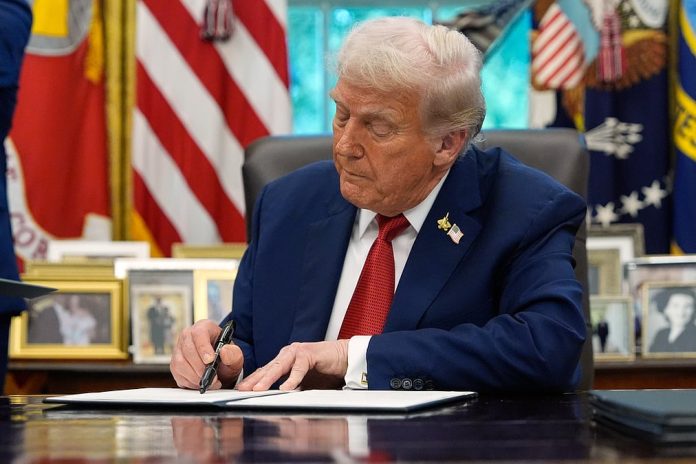
US President Donald Trump on Thursday night reignited his global trade war with the announcement of sweeping new tariffs, targeting pharmaceuticals, heavy trucks, home renovation fixtures and furniture in one of the most aggressive protectionist moves of his presidency.
The late-evening declaration marks the most severe trade policy measure since April, when Trump stunned Washington and its allies with reciprocal tariffs imposed on nearly every United States trading partner.
In a post on his Truth Social platform, the Republican president revealed that beginning October 1, “we will be imposing a 100% Tariff on any branded or patented Pharmaceutical Product, unless a Company IS BUILDING their Pharmaceutical Manufacturing Plant in America.”
The new restrictions immediately triggered backlash from abroad, with American ally Australia voicing sharp concerns. Canberra exported pharmaceutical products valued at an estimated $1.35 billion to the United States in 2024, according to figures from the United Nations Comtrade Database.
Australian health minister Mark Butler, speaking on Friday, warned that the higher duties were “not in the American consumers’ interest … particularly given the degree to which their exporters to Australia benefit from that free trade as well.”
In a separate social media statement, Trump also unveiled a 25 percent tariff on “all ‘Heavy (Big) Trucks’ made in other parts of the world” to shield US-based manufacturers such as Peterbilt, Kenworth, Freightliner, Mack Trucks and others.
Foreign competitors including Sweden’s Volvo and Germany’s Daimler, which owns the Freightliner and Western Star brands, immediately felt the impact. Shares in both companies sank sharply in after-hours European trading, reflecting investor unease.
Trump insisted the truck tariffs were justified “for many reasons, but above all else, for National Security purposes!”
The decision follows a Section 232 investigation initiated earlier this year into imported trucks. The rarely used trade law provision allows the US president broad discretion to impose tariffs or restrictions if imports are deemed a threat to national security. Trump has repeatedly relied on Section 232 powers to justify tariffs as part of his pledge to revive domestic manufacturing while punishing what he calls unfair foreign practices.
Not stopping there, Trump targeted the home renovation and furniture sectors. He declared that “a 50% Tariff on all Kitchen Cabinets, Bathroom Vanities and associated products” will take effect October 1, alongside “a 30% Tariff on Upholstered Furniture.”
Industry data underscores the potential consequences. According to the United States International Trade Commission, imports, primarily from Asia, accounted for 60 percent of all furniture sold in 2022, including 86 percent of wood furniture and 42 percent of upholstered pieces.
Following Trump’s announcement, shares of home furniture retailers Wayfair and Williams Sonoma, both heavily reliant on imported products, tumbled in after-hours trading.
Economists warned that the tariff escalation risks fueling inflationary pressures in the US economy, which remains the world’s largest but is highly sensitive to import costs.
Trump’s sweeping trade actions form part of his broader mission to reorient the United States away from an import-dependent model toward what he describes as a “manufacturing renaissance.” His administration has already imposed a baseline 10 percent tariff on all countries, layering on higher rates against nations where exports to the United States significantly outweigh imports.
The president has also wielded emergency powers to levy additional tariffs on longstanding trade partners, including Canada and Mexico, and on China, citing issues ranging from fentanyl trafficking to illegal immigration.
It remains unclear how the new tariffs set to take effect next week will be integrated into the existing patchwork of trade restrictions. What is clear, however, is that Trump has once again signaled his determination to double down on protectionism, despite warnings from allies, businesses, and investors about the risks to global supply chains and American consumers.



